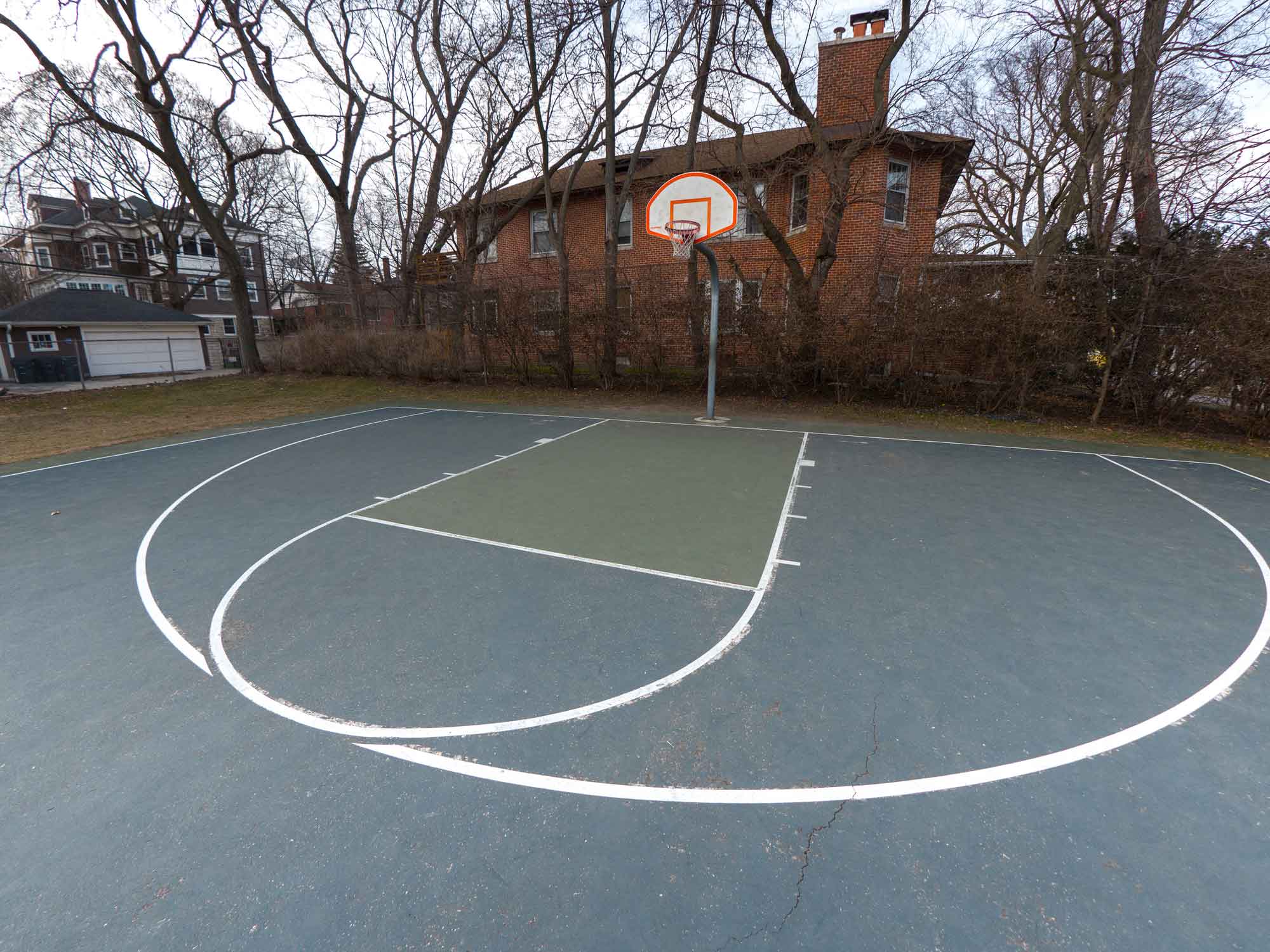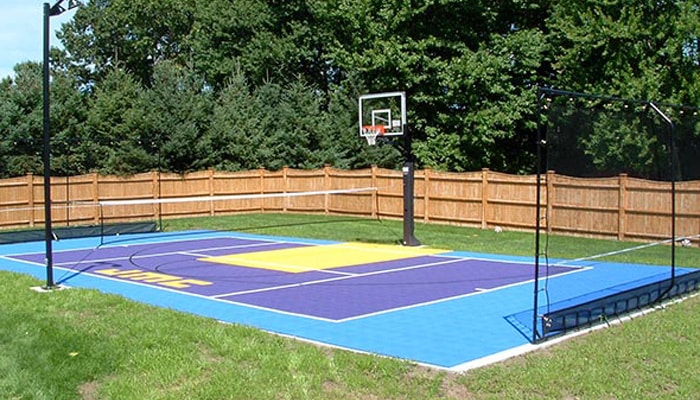
Building Court Tips
Installing a game court in your backyard can be the best investment you can make for you and your family.
- The kids (not just your own) will be safe in your backyard
- You know who they are with and what they are doing
- There will always be something active for them to do outside
- It gets them off the couch or away from the computer and electronics
- It promotes good sportsmanship, healthy bodies and an active lifestyle
The list goes on; the changes we have seen in family life with the installation of a game court are remarkable!
However, there are important considerations to be taken before you decide.
1. Sports
- How old are your children?
- What sports are they currently involved in?
- What sports do you see them playing in the future?
- Do you play?
On a typical mid-sized multi-purpose game court as many as 15 games can be played. Shifting from one to another is typically very easy and fast. To a large extent, what you play will determine the size of court needed.
If basketball is your family’s primary sport, a 3 point line may be important. At 19 ½ feet from the rim a full 3 point line requires a court at least 25×45 feet to allow a player to shoot from behind the line.
If volleyball or any other “net” sports are important, except full tennis, 30×60 feet allows for full court volleyball. The basketball hoop is often placed in the middle of the 60 foot side and used as the volleyball net post as you can see in this photo:

This configuration allows for half court basketball with full court volleyball and other net sports on the same court.
The court size is all up to you and should be very customizable allowing you to create the best backyard environment possible with a few other considerations:
2. Space
- Generally a court cannot be built inside your property’s setback lines
- Setbacks vary by town and zones within each town
- Some towns limit the amount of lot coverage allowed by zone
- Most towns consider non permeable surface as “coverage”
- Many courts are built on asphalt or concrete, not permeable
- Courts cannot be built over septic systems
- Most towns will not allow a court to be built near wetlands
- The largest flattest space will require the least amount of preparation
- The court should be placed far enough from large trees that roots will not be an issue
Other than that you should be able to design and build a fantastic backyard recreation center that your family will enjoy for years. Assuming you can get the appropriate permits from your town.
3. Permits
- Start early – it will almost always take longer than expected
- Involve your contractor – most will help with the process
- Find your property site or plot plan, it can tell you a lot
4. Contractor
- You cannot afford to use anyone unlicensed or uninsured
- Your contractor should provide you with drawings or plans
- As mentioned above, they should help with permitting process
- Ask to see their work – experience building courts matters
- Ask how many courts they have built
- Ask them if this is their primary business or a sideline
- Check them out
Now that you’ve chosen a court builder here are some things they should discuss with you. If they don’t, it should set off some internal alarms bells.
5. Access
- Most fencing can be taken down and put back up to allow access
- Limited access will limit the equipment that can be used = more labor
- If you are using concrete as your base a pump truck can be used to reach the court from a reasonable distance
- If there is no access there will be more labor as everything will be done by hand
6. Sub Base
- Sod will be stripped away
- Court area will be leveled often with a “cut and fill” meaning dirt will be moved from one end of the court to the other to level
- If there is too much change in elevation from one end to the other a retaining wall may be necessary
- Courts collect and direct a lot of water, drainage must be considered
- Drainage may be required for your permit; it will be installed first
- A crushed stone base of 4” is put down and compacted
- Now you are ready for the base of your court to be built
7. Base
- Generally built with concrete or asphalt though other options exist
- Concrete done right is permanent and will not require any maintenance
- Asphalt will deteriorate with repeated freeze thaw cycles and at some point will require repair and maintenance
- Compacted base is made by layering smaller and smaller stone and compacting heavily it will be permeable and requires some maintenance
- Modular base – there are two new types of base available that require no concrete or asphalt and are very permeable
8. Athletic Surface
- Concrete or asphalt can be left with no further surfacing
- Painting the surface looks better but provides no cushioning
- Acrylic’s can be applied to add a very small layer of protection
- A cushioned surface can be applied and layered with acrylic’s however, this option is almost exclusively for tennis use and does not tolerate many other sports
- Modular surfaces offer varying degrees of protection for players. Given their design they are engineered with small “legs” that absorb shock and openings that allow water to pass through and flow off the court
9. Manufacturer
- As you move down the list above, manufacturing is more important
- Where is the product made?
- What sort of quality control processes do they have?
- How long have they been in business?
- How many courts do they have installed?
- How do they look after a few years?
- What is their distribution strategy, who sells, installs and repairs?
Quality manufacturer’s offer quality warranties, the last of our Top Tips
10. Warranty
- Generally there are no warranties on paint
- Acrylic’s may offer some warranty, but not long, as acrylic’s must be reapplied every few years
- Modular offers a range of warranties, often 10 years or more
- Has the manufacturer been in business longer than their warranty period?
- A good modular warranty will cover you completely for the first 3 or 4 years, then it becomes prorated for the balance
- Really, read the fine print regarding warranties
We hope this guide was helpful and a worthwhile use of your time. We look forward to seeing you out playing with your family soon.
